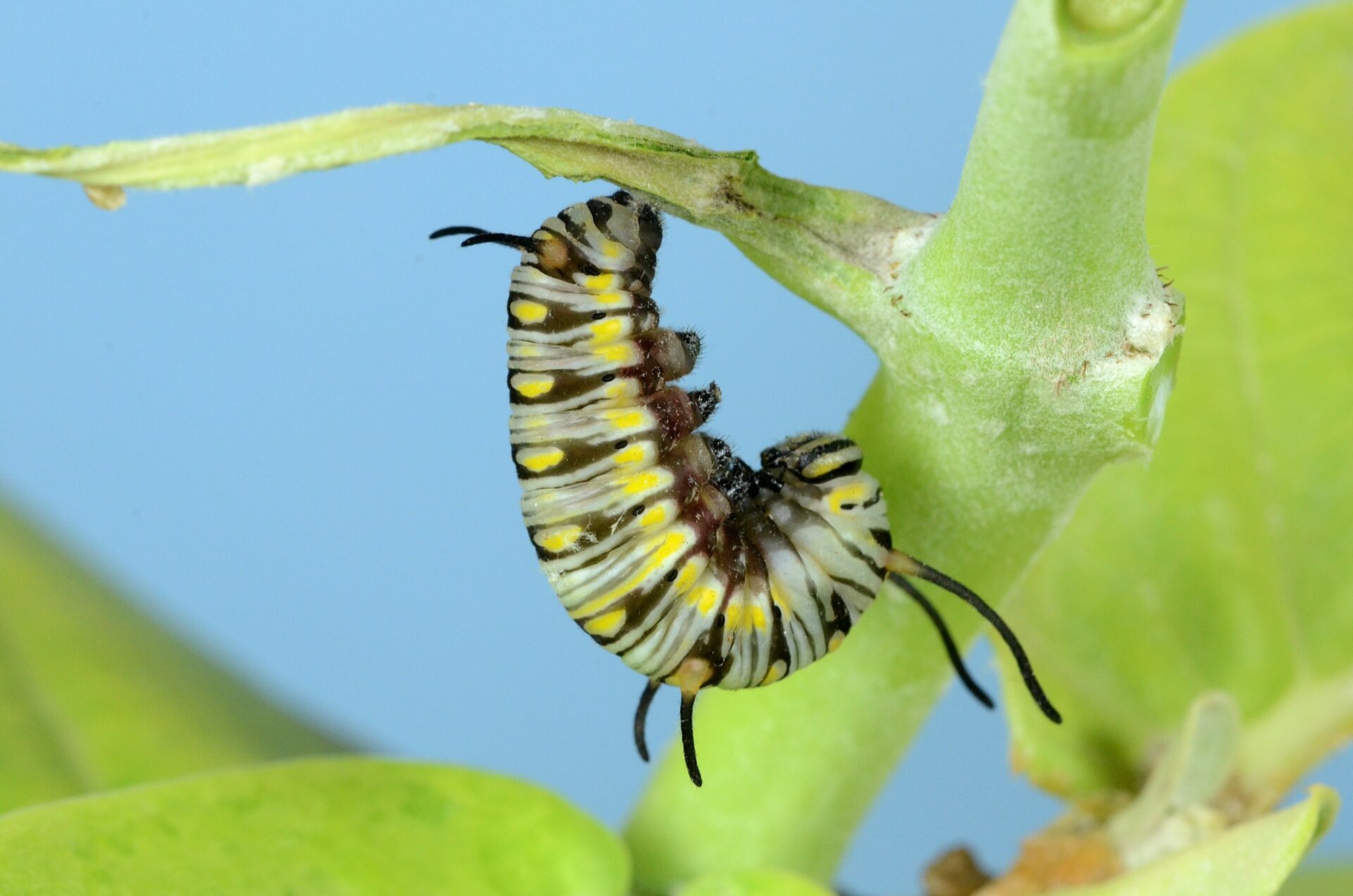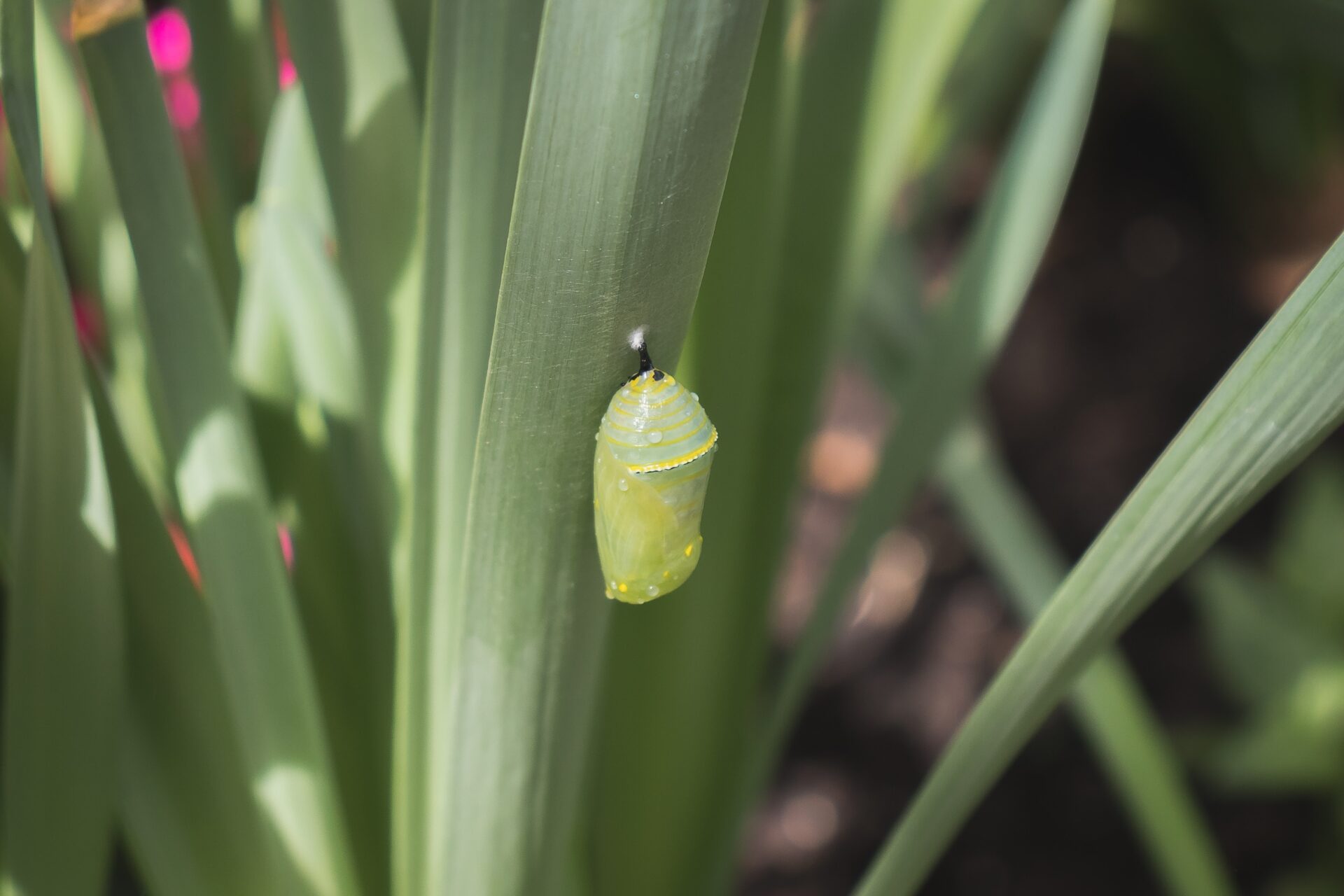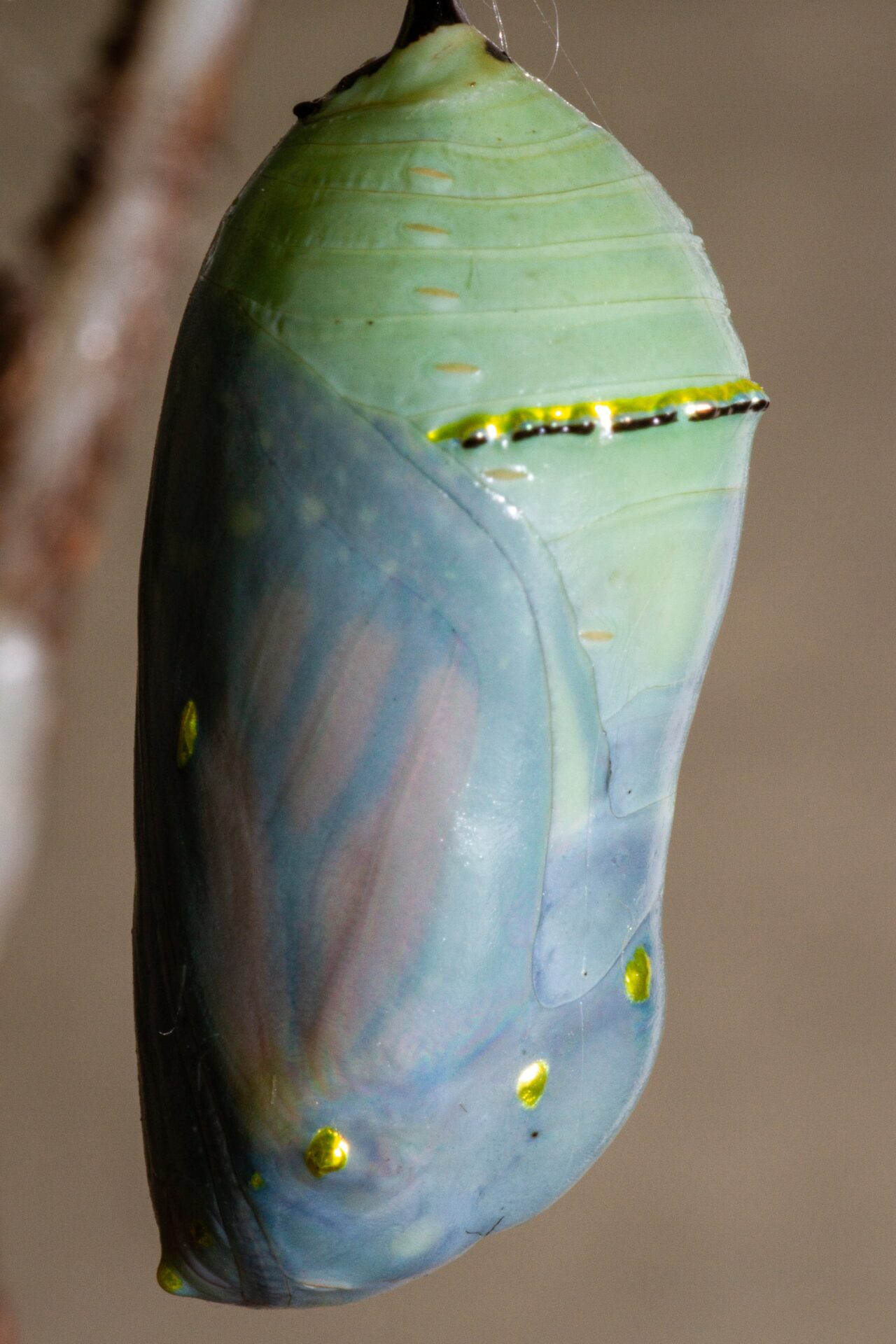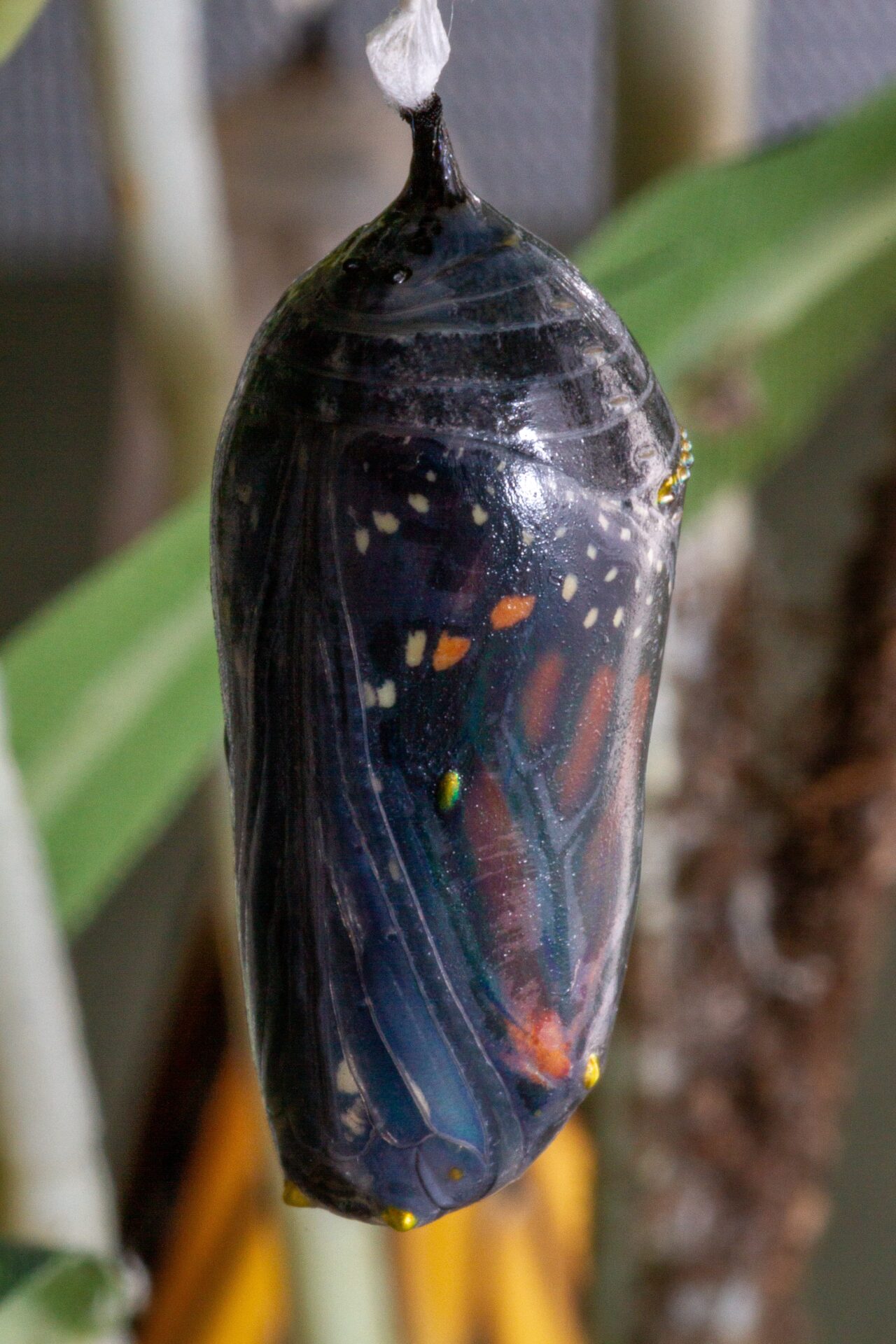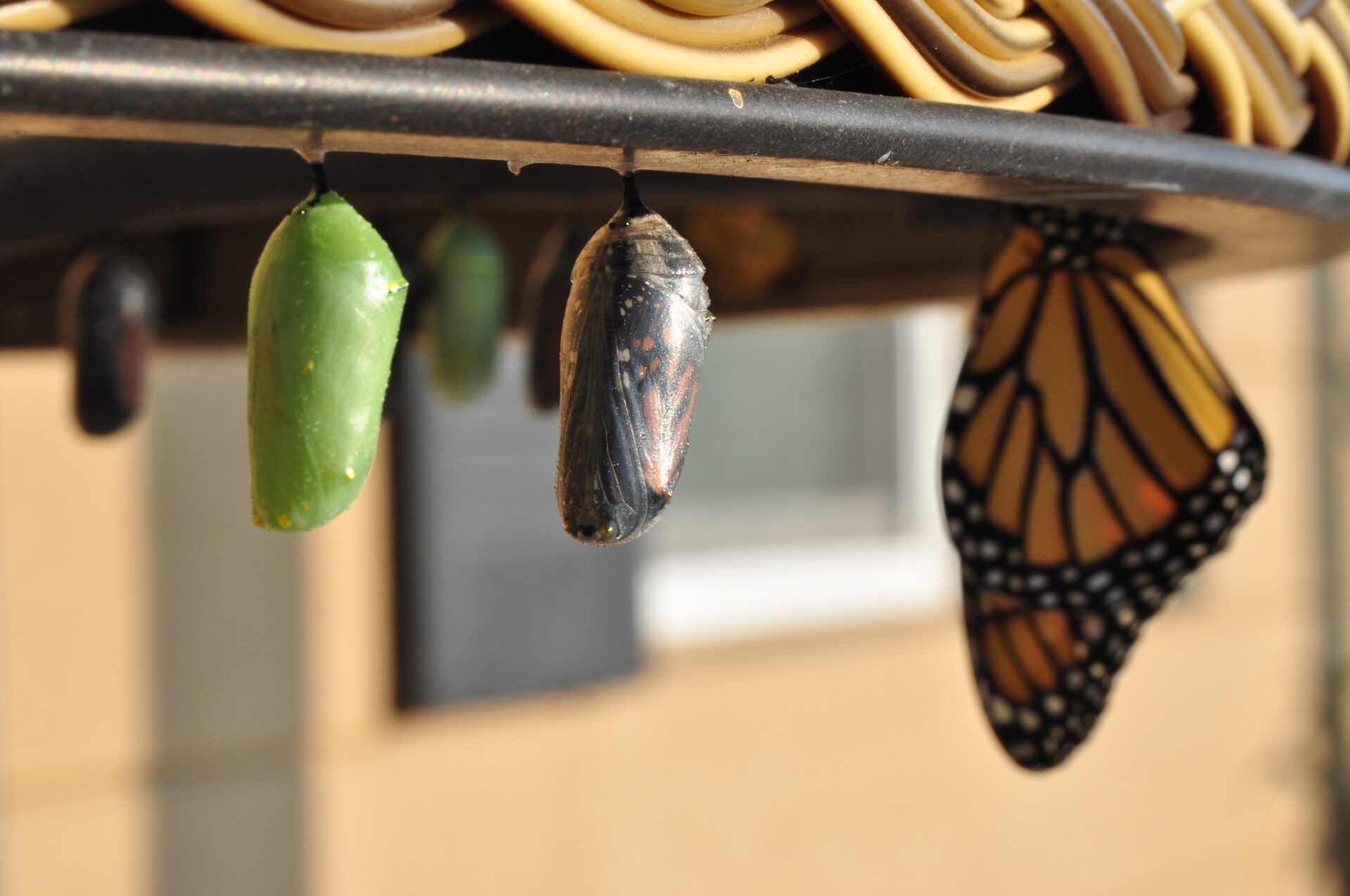Butterfly Sanctuary to Preserve Monarch Butterflies
The eastern North American monarch population is notable for its annual southward late summer/autumn instinctive migration, from northern and central United States and southern Canada to Florida and Mexico. Monarchs cover thousands of miles during the fall migration, with a corresponding multigenerational return north. The western North American population of monarchs west of the Rocky Mountains often migrates to sites in southern California but has been found in overwintering Mexican sites, as well.
Their life cycle has four phases: egg, larva, pupa, and adult. Monarchs transition from eggs to adults during warm summer temperatures in as little as 25 days, extending to as many as seven weeks during the cool spring conditions. During their development, both larvae and their milkweed hosts are vulnerable to weather extremes, predators, parasites, and diseases; commonly, fewer than 10% of monarch eggs and caterpillars survive.
The adult emerges from its chrysalis after about two weeks of pupation. The emergent adult hangs upside down for several hours while it pumps fluids and air into its wings, which expand, dry, and stiffen. The butterfly then extends and retracts its wings. Once conditions allow, it flies and feeds on a variety of nectar plants. During the breeding season, adults reach sexual maturity in 4-5 days.
However, the migrating generation does not reach maturity until overwintering is complete. Females are often darker than males and have wider veins on their wings. The ends of the abdomens of males and females differ in shape. Adults typically live for 2-5 weeks during their breeding season. Larvae growing in high densities are smaller, have lower survival, and weigh less as adults compared with those growing in lower densities.
Butterfly sanctuaries are a one-of-a-kind experience and one of the best activities for families and visitors of all ages.
Every October, thousands of butterflies make a stop in eucalyptus groves throughout California. The eucalyptus is the preferred tree of the Monarch butterfly during their migration to warmer climates. The butterflies hang in clusters from eucalyptus branches to maintain body temperature, and the resulting effect is stunning. Visitors come from miles around to take part in this spectacular event. Monarch butterfly tours available throughout the sanctuary.

